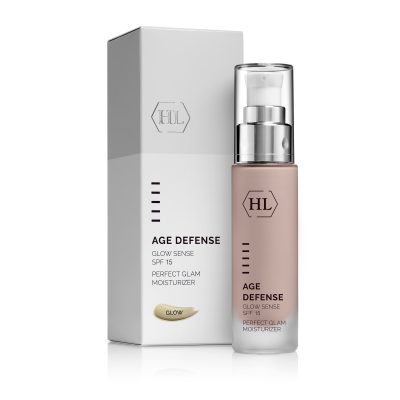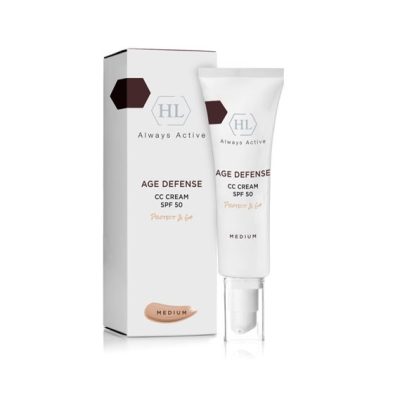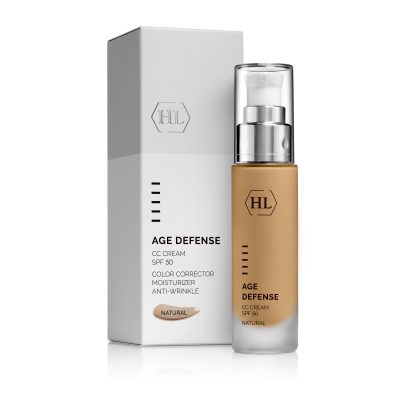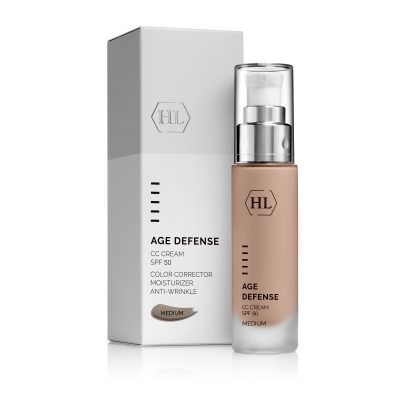The Y-Zone
The Y-Zone area, refers to the lower part of the face including the chin, jaw and neck line, is among first to betray our age.
Even when the facial skin is groomed, the loose and sagging skin in this area contributes to an older appearance and adds on years to our aesthetics because of lack of defined facial contours. In spite of that, many women actually tend to neglect this delicate area in their daily skin care regimen.

-
Sale!

AGE DEFENSE GLOW SENSE SPF 15 50ml
58,66 €Original price was: 58,66 €.44,00 €Current price is: 44,00 €. Add to cart -
Sale!

AGE DEFENSE CC CREAM SPF 50 MEDIUM 50ml protect & go ***NEW *** Limited Edition
51,36 €Original price was: 51,36 €.38,52 €Current price is: 38,52 €. Read more -
Sale!

AGE DEFENSE CC CREAM SPF 50 NATURAL 50ml
59,43 €Original price was: 59,43 €.44,57 €Current price is: 44,57 €. Add to cart -
Sale!

AGE DEFENSE CC CREAM SPF 50 MEDIUM 50ml
59,43 €Original price was: 59,43 €.47,54 €Current price is: 47,54 €. Read more
What characterizes the Y-zone, why the skin tends to sag and wrinkle prematurely?
The sagginess, lack of firmness, wrinkles and older looking skin in the Y-zone begins in the 40s and early 50s.
A number of factors are responsible:
• The decline in the synthesis of collagen and elastin – the gradual decrease in the production of these two essential skin proteins, responsible for its firmness and elasticity, is a direct result of the reduction in the amount of the female hormones which begins at menopause.
• Reduced amount of submental fat – the skin in the neck area is very similar to the skin around the eyes, more thin and delicate, characterized by less oil glands and a thinner layer of fat; therefore it is prone to showing wrinkles sooner. To this contributes greatly the decrease in dermal fat that occurs with age as a result of hormonal and biochemical changes.
• A decrease in hyaluronic acid – starting from adolescence, the natural production of hyaluronic acid in the skin decreases slowly, as a result, the water retention capacity of the skin and its moisture balance decrease and may lead to an increase in the amount of wrinkles.
• Gravity– over the years the inevitable pull of gravity contributes to a sagging jawline.
• Absorption of jawbone – the significant changes in facial bones, especially the jaw bone which defines the lower angle of the face, which occur as people age, contribute to an aging appearance; a decline in the jaw’s volume means there is less support of soft tissue of the lower face and neck contributing to sagging skin and a loss in the jawline definition.
• Weakening of the platysma muscles – over the years, the platysma muscles, those which keep the deep layers of the neck in place and give structure to the neck, loose elasticity and strength gradually becoming weaker, this leads to sagging skin.
• Forgetting to apply sunscreen – solar radiation affects the Y-zone as well, and it is not uncommon for people to forget the daily application of a broad SPF cream to this area as well, especially on the neck, leaving it exposed to radiation and the damaging effects of free radicals.
In recent years, the field of plastic surgery developed a series of new procedures and techniques for the rejuvenation of the Y-zone. Alongside the invasive treatments, the aesthetics field has also what to offer regarding innovative treatments, based on effective ingredients which provide solutions to a variety of problems that characterize this area. It should be remembered that the Y-zone needs continuous care and active ingredients that will encourage the synthesis of essential components for a younger looking skin; hence it is important to select functional formulations that provide long lasting, visible results.